Benicia Iridescence and Patina on Bottles – Not a Sick Bottle
09 February 2012 (R•041614)
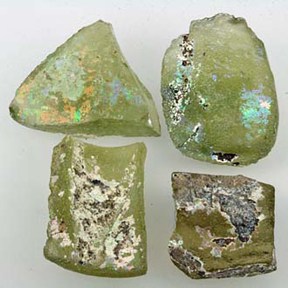
![]() I wanted to start a collection of pictures of bottles with Benicia iridescence and/or patina. Please send me examples of bottles you have or pictures in your archives.
I wanted to start a collection of pictures of bottles with Benicia iridescence and/or patina. Please send me examples of bottles you have or pictures in your archives.
I asked prominent West coast collector Mike Dolcini for some pictures of sick bottles from his extensive background of material that he has collected, found or dug and his response was “DUDE, that isn’t sick, it’s that beautiful “Benicia” iridescence. You never remove that. Some collectors pay a premium for it”.
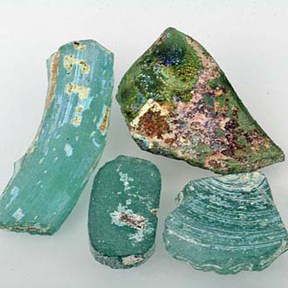 This made me smile. Of course I know that the bottles are not sick but I suppose in my email haste I used the term ‘sick’ thinking it sufficed for the tough to spell words “Benicia”, iridescence and patina.
This made me smile. Of course I know that the bottles are not sick but I suppose in my email haste I used the term ‘sick’ thinking it sufficed for the tough to spell words “Benicia”, iridescence and patina.
You know, when I woke up as a child and was green or purple, and my runny nose was crusted up, my mom thought I was sick?
“DUDE, that isn’t sick, it’s that beautiful “Benicia” iridescence. You never remove that. Some collectors pay a premium for it”.
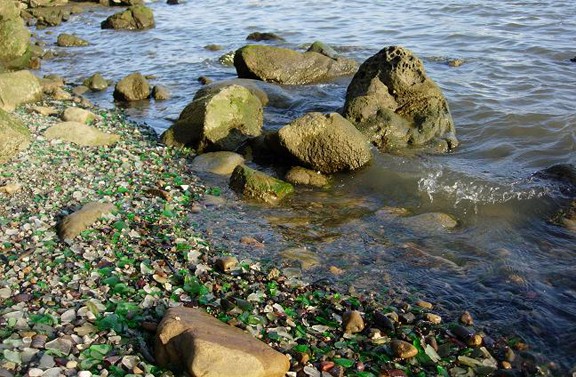
Glass Beach is an unusual beach in Benicia, California that is abundant in Sea glass created from years of dumping garbage into an area of the coastline. It is located at the 12th Street Park – Wikipedia
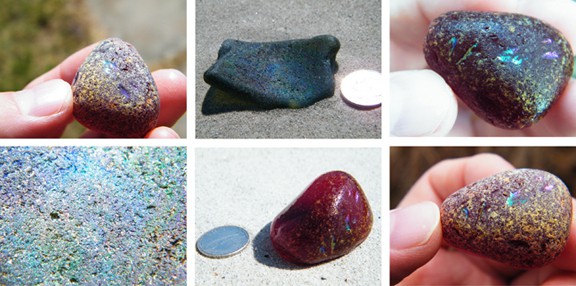
Photos of pieces of sea glass which has this “benicia iridescence” even though they have been worn by the sea. Perhaps they obtained this patina after, and not during active tumbling in the ocean…Clyde Smith, Canada
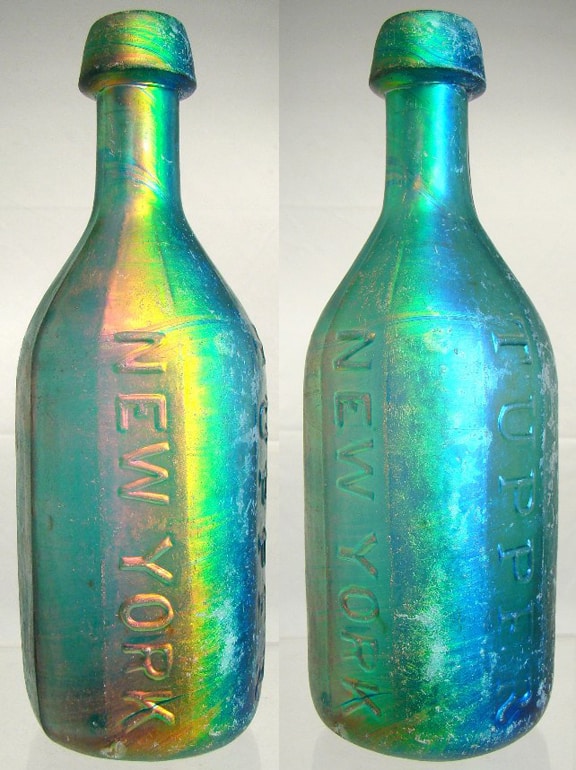
SOUTHWICK & TUPPER NEW YORK. Here’s an example of Benicia glass at its best. Colors range from bright red to beautiful greens and blues – American Bottle Auctions
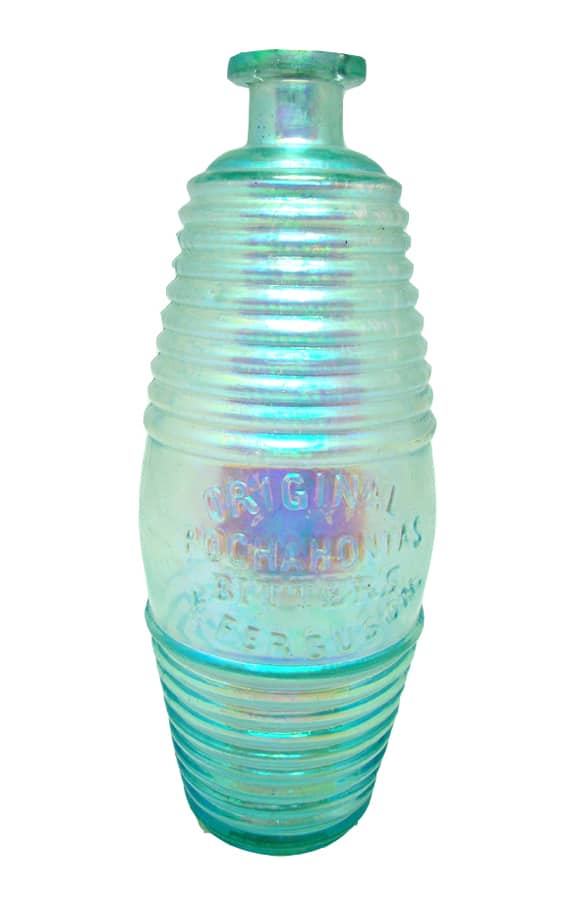
The Original Pocahontas bitters bottle (Y. Ferguson) is a rare bitters that always appears as aqua. The one is covered in a Benicia film and “any way you look at it, it’s a very gorgeous bottle,” says Jeff Wichmann. “We can say without any hesitation that this is the finest Benicia bottle we’ve ever offered.” (American Bottle Auctions)
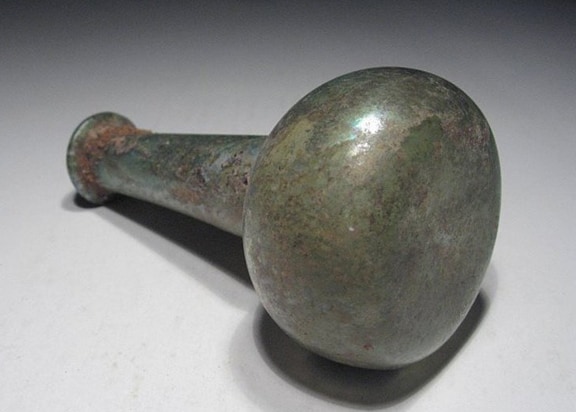
From the Holy Land, Roman glass tear bottle with golden patina “Iridescence” Nicely made in a globular body with a long cylindrical neck and a rim folded outwards. Dated from, 100 – 300 AD
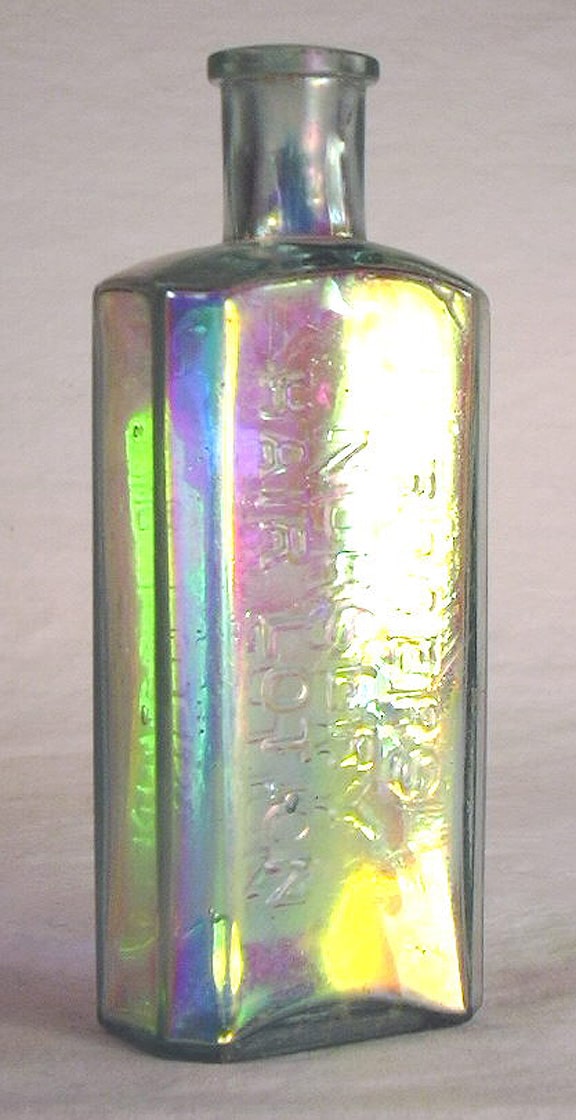
ROGERS NURSERY HAIR LOTION This is very unique bottle due to the beautiful rainbow iridescence “patina” from a rare “positive” interaction with soil this bottle was buried in. courtesy High Desert Historic Bottle Web Site
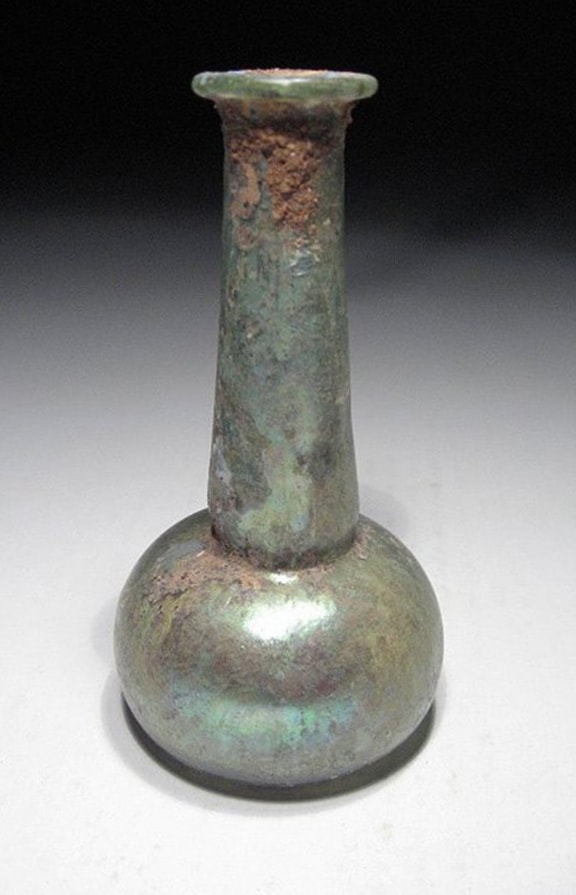
From the Holy Land, Roman glass tear bottle with golden patina “Iridescence” Nicely made in a globular body with a long cylindrical neck and a rim folded outwards. Dated from, 100 – 300 AD
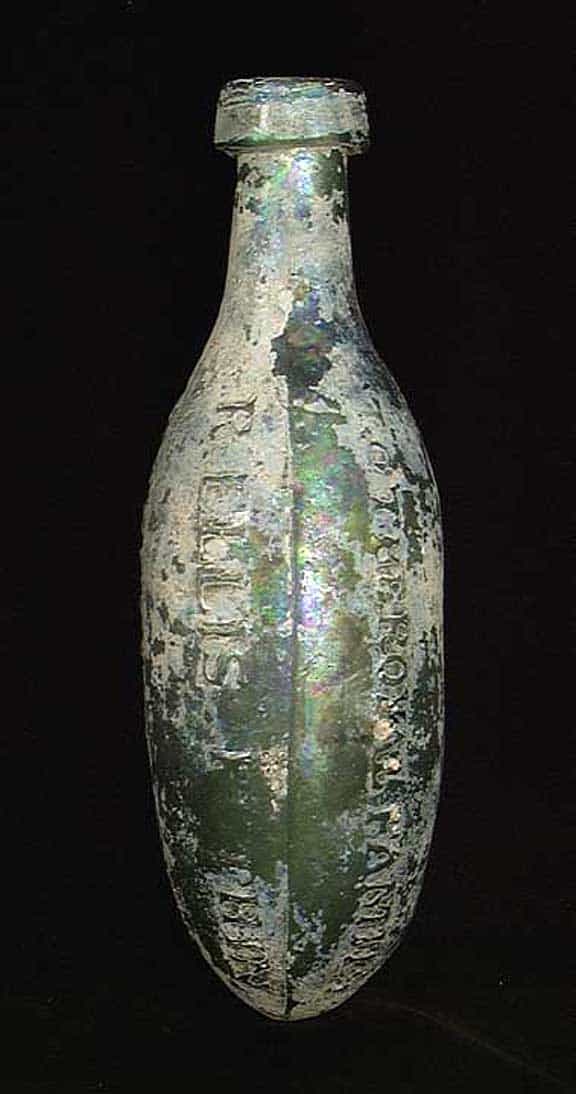
A Crimean War glass bottle with fine Iridescence, 1853-56. The club shaped bottle of quite heavy glass with molded inscription reading R. ELLIS PUTHIN/MANUFACTURED/ON SUPERIOR/AERATED WATERS/TO THE ROYAL FAMILY. The bottle apparently discarded by British troops during the war. Found in the Crimea. 8.25″. The entire surface covered with beautiful frosty peacock iridescence better than on most examples of ancient glass. A gem with an interesting historical context. Edgar L. Owen Ltd
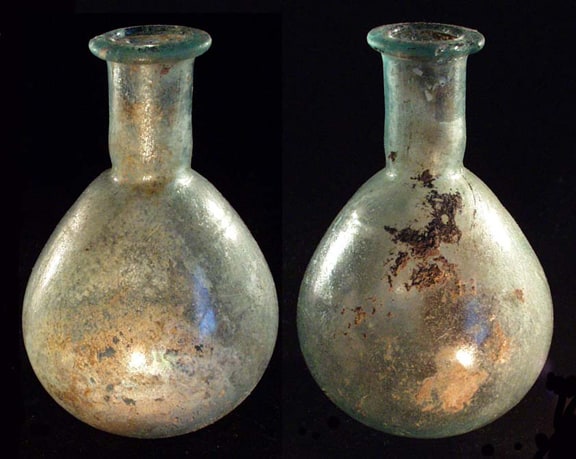
Roman Glass Perfume Bottle Eastern Mediterranean Early Mid 1st Century. Light aquamarine glass, thick, transparent. Broad piriform body with slightly flattened base; Tubular neck with tooled angle at bottom; disc-like rim with fold on top, pressed flat. Two tooling-marks round body. Remains of dark crust and some iridescence.
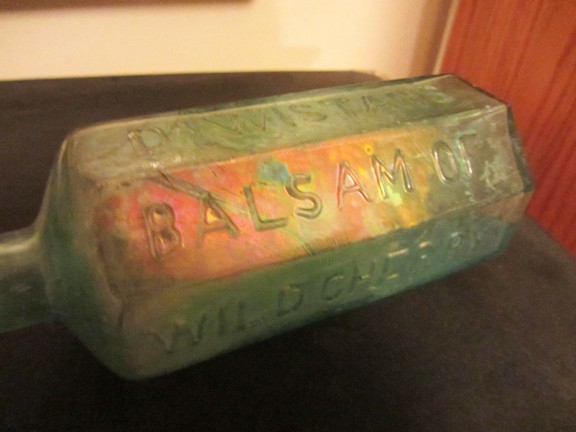
Very light colored pontilled DR. WISTARS BALSAM OF WILD CHERRY Benicia dug bottle. Colors are salmon red, yellow and green. – Dennis Rogers
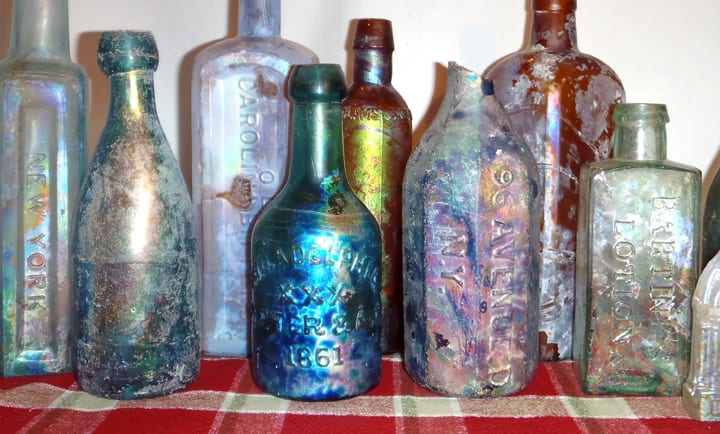
Quick shot of some of my favorite “not sick” glass for your gallery. Headless sided cobalt soda is a Coon & Spencer Nectarian from New York. – Andy (Goldfrank)
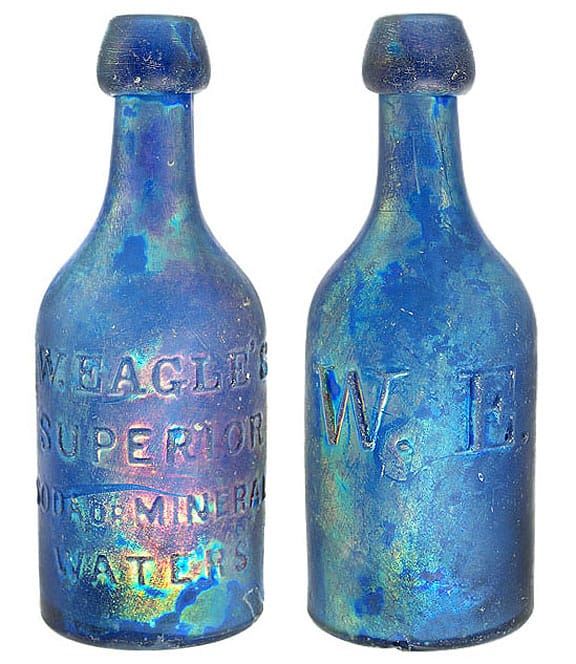
“W. EAGLE’S / SUPERIOR / SODA OR MINERAL / WATERS – W.E.”, New York, ca. 1845 – 1860, cobalt blue with an overall metallic patina, 7 1/8”h, iron pontil, applied mouth. An old 3/8” by 1/4” chip is off the side at the base and a faint ice pick bruise is on the very inside edge of the lip. Curt Paget Collection. – Glass Works Auctions

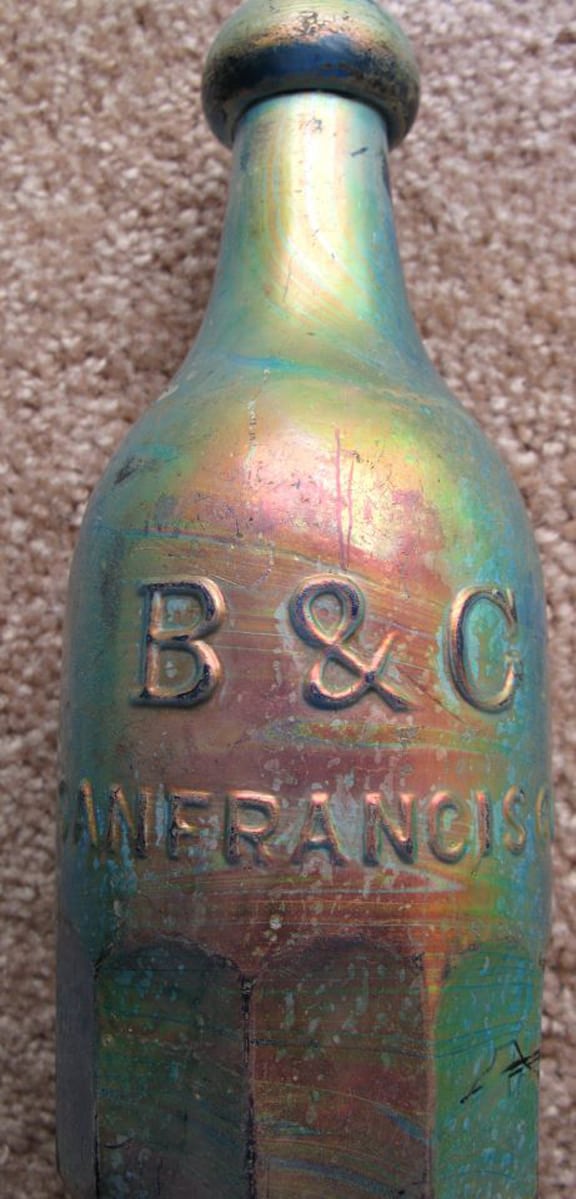
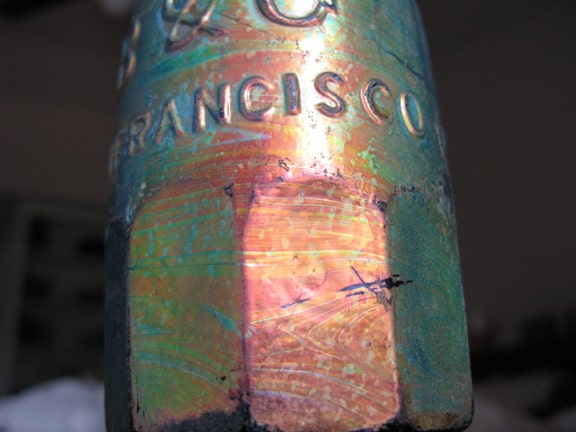
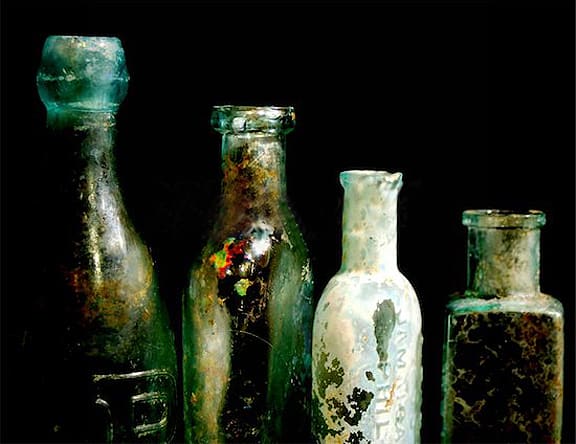
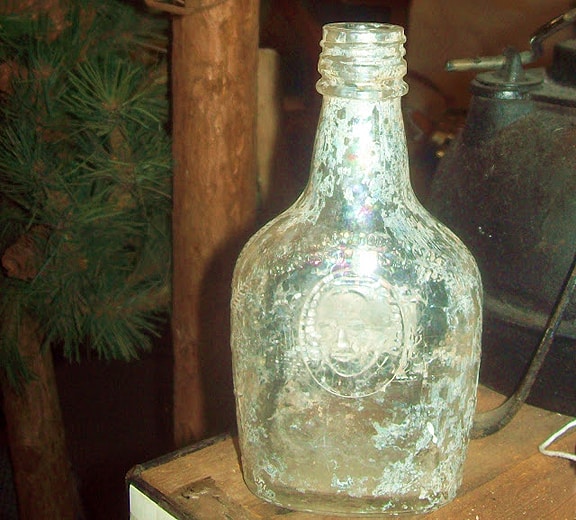
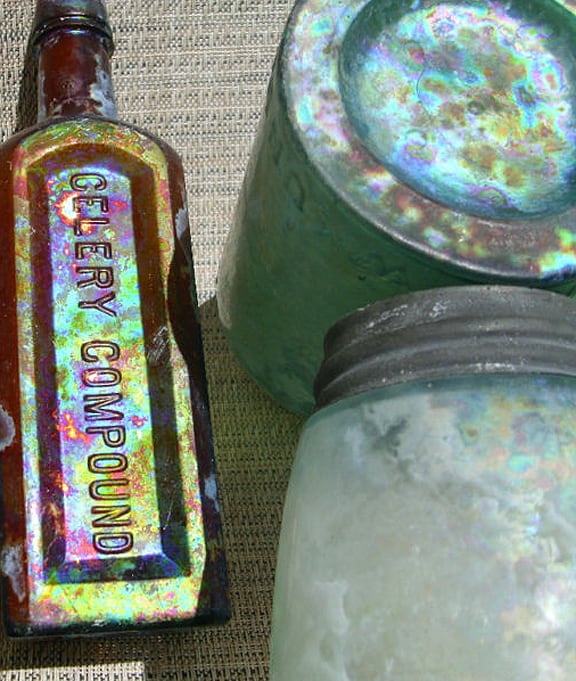
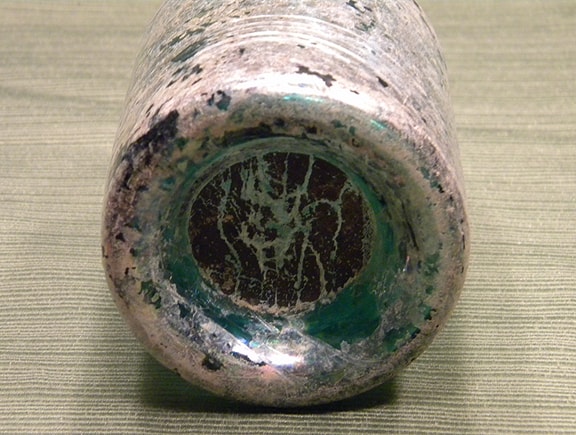
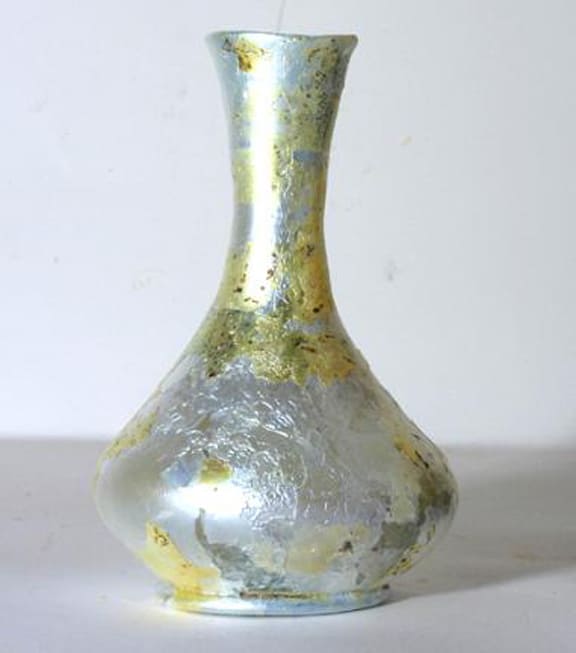
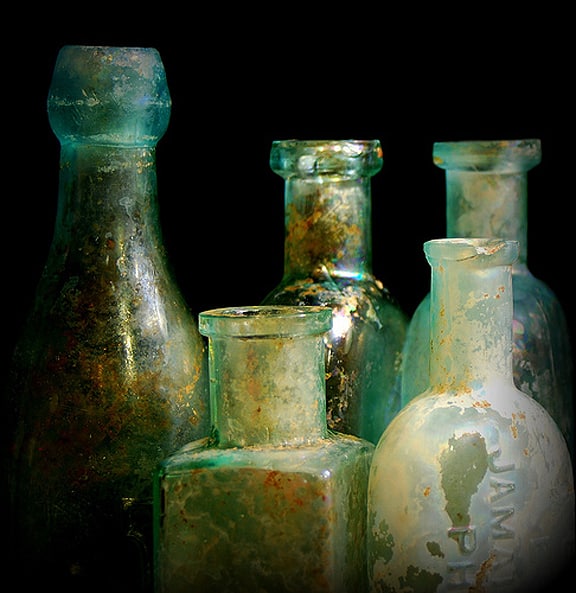
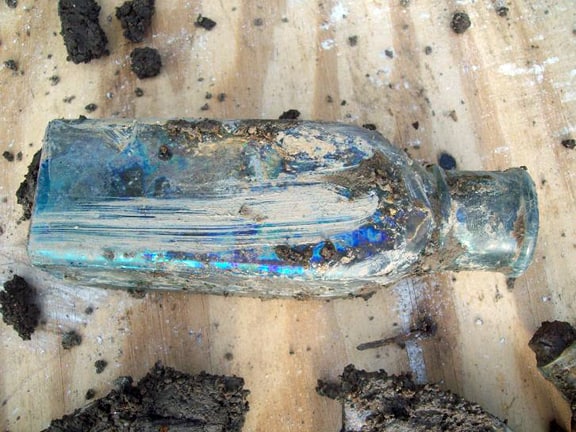
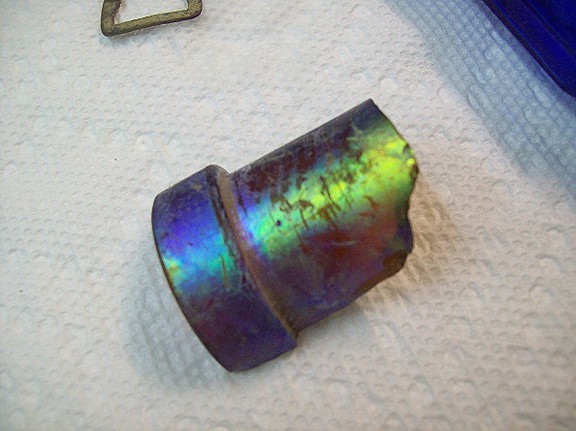
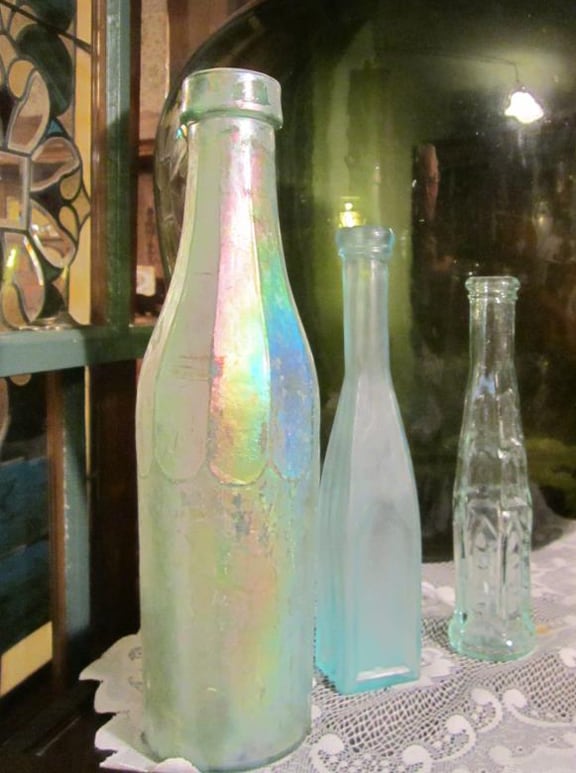
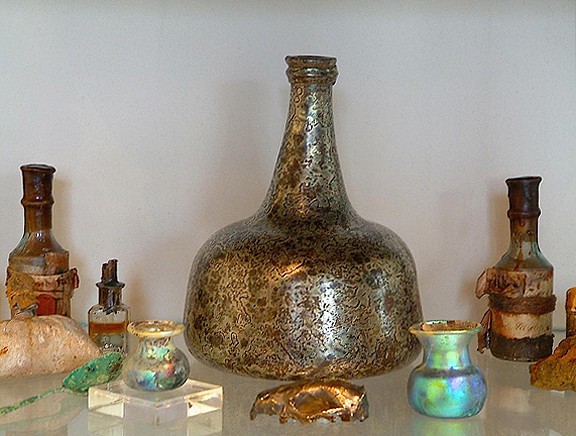
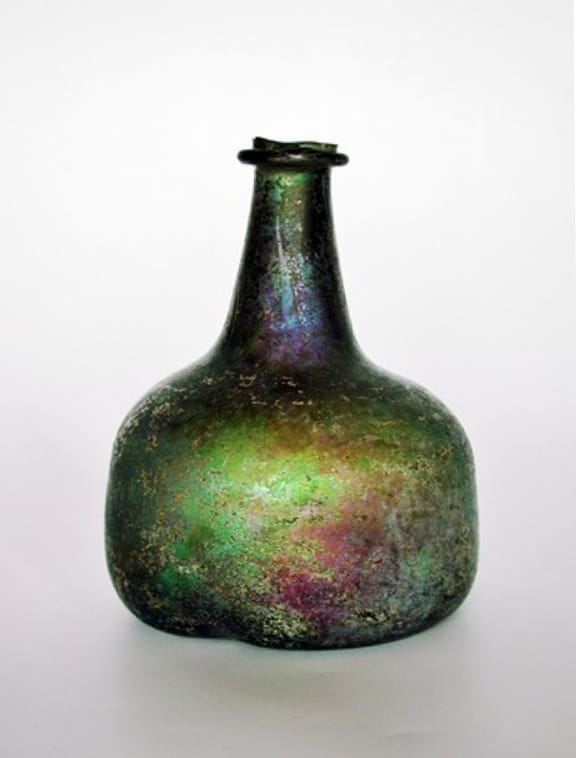
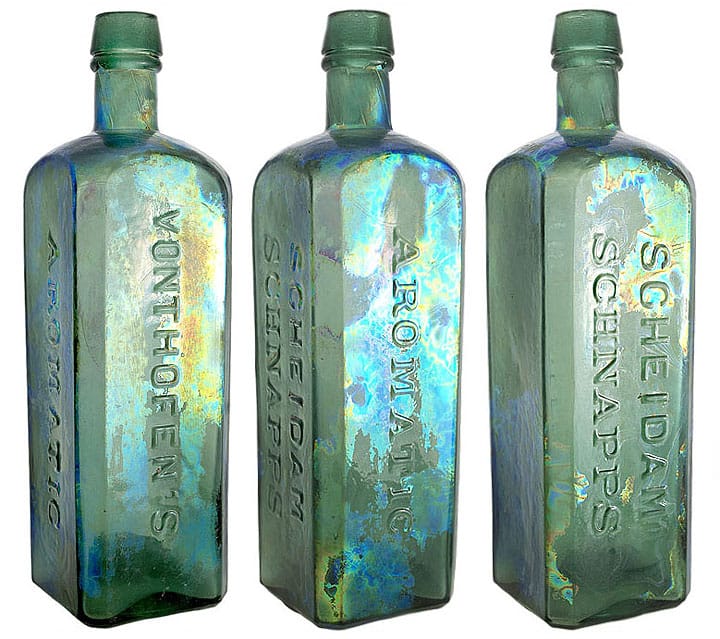






Ive always been under the impression that Benicia glass is a certain form of mineral decomposition in the glass creating an abalone type iridescence and build up to the glass. Not just the typical sick or rainbow decomposition we are all familiar with with the majority of dug bottles? Ive seen what I thought to just be “sick” glass called Benicia while now and then there’s been a bottle called Benicia that really popped, took on a whole character of its own. Not having ever held anything that was surely benicia glass I wonder if Ive been misled, by myself?
There was also a large tannery in Benicia and the acidic effluent from the tanbark oak used in the process were allowed to run freely into the bay. That really colored ’em up. Not much left to find, but occasionally a real gem pops up. It was drilled heavily in the late ’60s and ’70s. I stopped going several years back. Too darned filthy. Give me a dirty, crap infested outhouse any day. Guess I’ll dig one tomorrow.